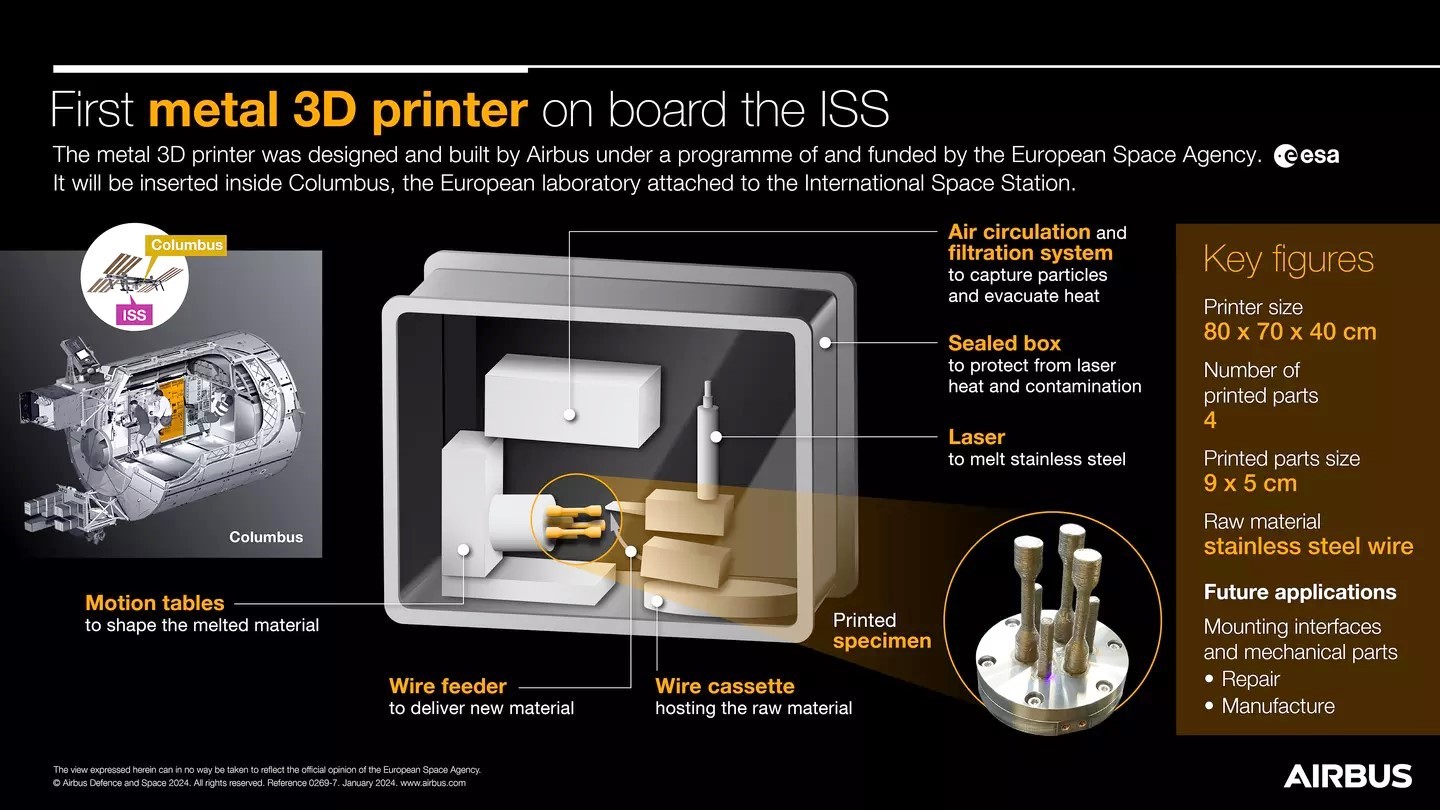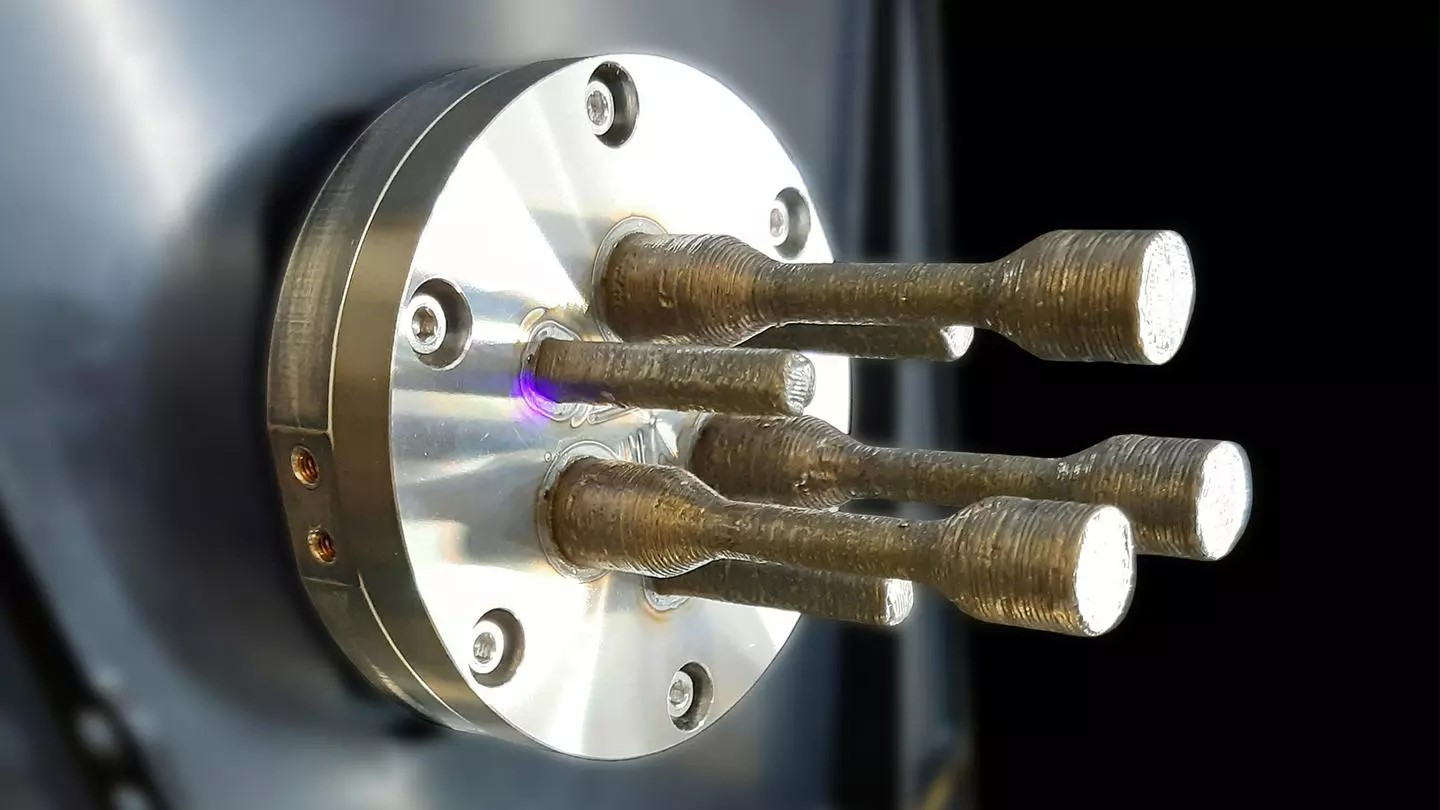The first metal 3D printer for space, developed by Airbus for the European Space Agency (ESA), will soon be tested on board the Columbus module of the International Space Station (ISS).
Copyright Airbus
This significant development could be a real game-changer for space manufacturing and future missions to the Moon or Mars.
Additive manufacturing (AM) is an industrial process that opens up new perspectives on the design of parts. Its uses are many, from the mundane to the surprising: from simple repairs to bioink implants, from printing entire houses to manufacturing spacecraft parts.
3D metal printing makes life easier for astronauts
There are already several plastic 3D printers on board the International Space Station (ISS), the first of which came onto the market in 2014. Astronauts have already used them to replace or repair plastic parts, as one of the biggest problems of everyday life in space is the delivery of equipment that can take months to arrive. But not everything can be made from plastic…
This logistical constraint will intensify over the next few decades for future Moon and Mars stations. Even if the raw material still needs to be brought to market, printing the part is still more efficient than shipping it as a whole to its final destination.
Gwenaëlle Aridon, senior engineer at Airbus Space Assembly, said: “The metal 3D printer will open up new manufacturing possibilities in orbit, including the ability to produce load-bearing structural parts that are more resilient than a plastic equivalent.” Astronauts will be able to use tools such as wrenches or assembly interfaces that could connect multiple parts together. The flexibility and rapid availability of 3D printing will significantly improve astronauts’ autonomy.”
The challenges of printing metal in space
While the process of 3D printing is mastered on Earth, printing metal in space presents its own technical challenges. Sébastien Girault, systems engineer for metal 3D printers at Airbus, explained: “The first challenge with this technology demonstrator was the Size. On Earth, current metal 3D printers are installed in a laboratory that is at least ten square meters in size.
“To create the prototype for the ISS, we had to shrink the printer to the size of a washing machine.” This miniaturization is necessary to fit into the rack that will house the printer on board the ISS’s Columbus laboratory. “At this size we can print parts with a volume of nine centimeters high and five centimeters wide,” says Girault.
The second challenge is safety: protecting the ISS from the aggressive pressure environment caused by the laser and the heat it generates. The printer is housed in a sealed metal box that acts like a safe. The melting point of metal alloys compatible with this process can be well above 1,200 °C, compared to around 200 °C for plastic, requiring dramatic thermal control.
Girault said: “Gravity management is also crucial, which is why we chose wire-based printing technology. The wire is independent of gravity, unlike the powder-based system, which always has to fall to the ground.”
Regardless of whether it is plastic or metal, fumes are emitted that must be eliminated by filters and captured inside the machine so that they do not contaminate the air inside the ISS.
Aridon said: “Safety and contamination are important factors for us, not only for the ISS, but also for future operations on the Moon.”

Copyright Airbus
Is metal printing suitable for a microgravity environment?
This is one of the questions the team wants to answer. Two printers are used for this experiment: the “flight model” inside the ISS and the “engineer model” on Earth. The astronauts will print four samples in space that will be sent back to Earth for analysis. The same copies are produced using the technical model printer. Girault said: “To assess the effects of microgravity, ESA and the Danish Technical University will carry out mechanical strength and bending tests as well as microstructural analyzes on the parts manufactured in space and compare them with the other samples.”

Above: First of four 3D metal specimens to be printed aboard the ISS.
Copyright Airbus
The moon in sight
Metal 3D printing onboard the ISS will help improve understanding of the quality of metal printing in orbit and provide valuable insight into the operation of a metal 3D printer in space. Printing structural parts in space is an important step in preparing the technologies humanity will need for a permanent presence on the Moon.
“Increasing the maturity and automation of additive manufacturing in space could make a difference in supporting life beyond Earth,” emphasizes Aridon. “If you think beyond the ISS, the applications could be amazing. Imagine a metal printer using transformed regolith [moondust] or recycled materials to build a moon base!”
The metal 3D printer was developed and funded by a consortium consisting of Airbus Defense and Space, AddUp, Cranfield University and Highftech Engineering as part of a European Space Agency (ESA) program.
Note: The opinion expressed here can in no way be considered the official opinion of ESA.
